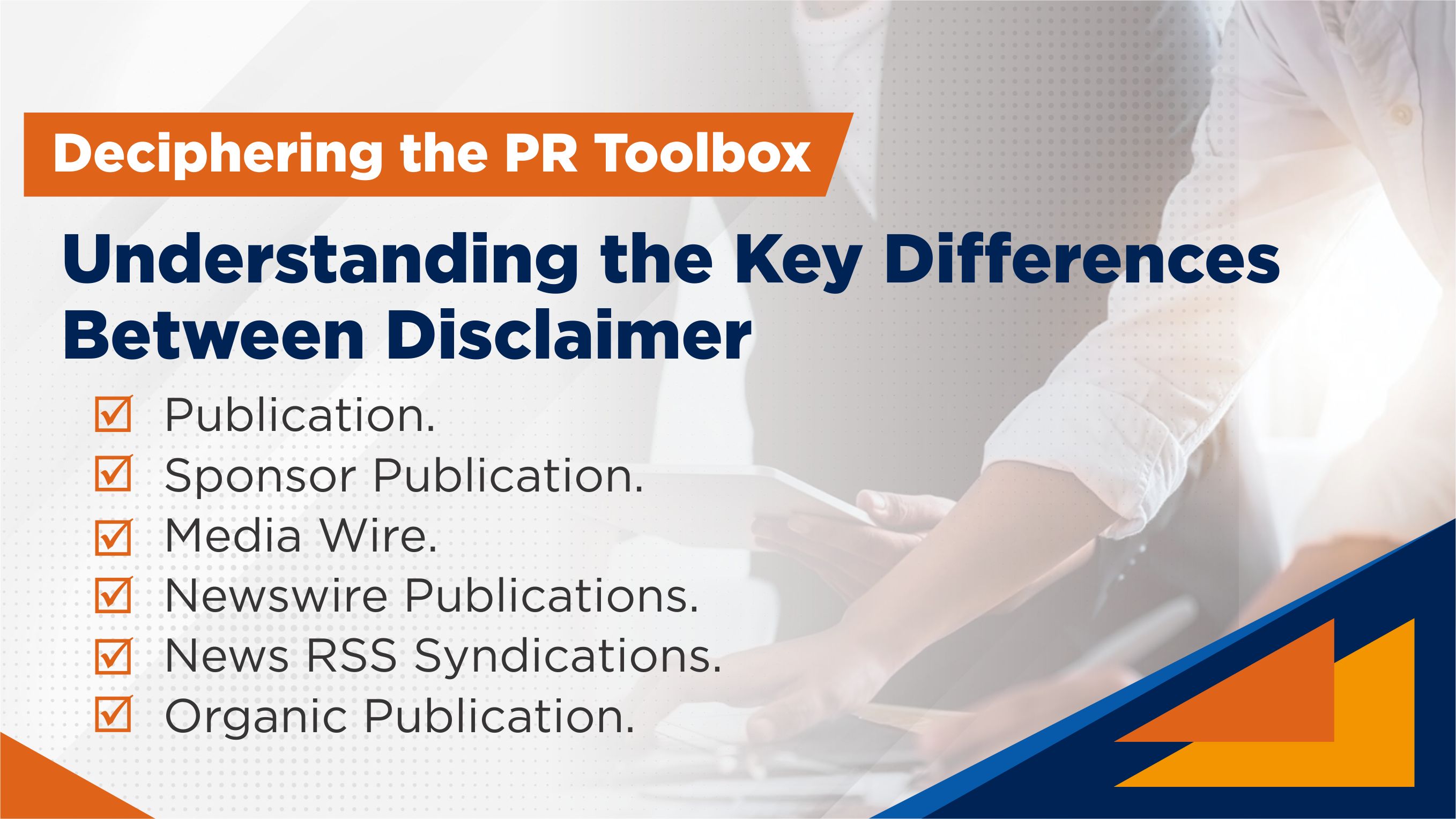Deciphering the PR Toolbox: Understanding the Key Differences Between Disclaimer

Deciphering the PR Toolbox: Understanding the Key Differences Between Disclaimer
Publication, Sponsor Publication, Media Wire, Newswire Publications, News RSS Syndications, and Organic Publication
In Public Relations (PR), various methods are employed to disseminate information, Build and strengthen relationships, and manage an organisation's reputation. Each of these methods serves a distinct purpose and carries its characteristics. With illustrative examples, let's delve into the differences between disclaimer publications, sponsor tag publications, media wire publications, newswire publications, News RSS syndications, and organic publications.
1. Disclaimer Publication:
Characteristics: Disclaimer publication is a PR strategy that explicitly discloses that the content originates from a particular entity, often an organisation, and is sponsored or paid for personal purposes. Sometimes, these articles help SEO if Media houses give Do-Follow links to entities' websites.

Example: A software company releases press releases on the Media network about a new product launch, and at the beginning or end of the article, it clearly states, "Disclaimer: This is a company press release. No Media journalist is involved in the creation of this content".
Or (ADVERTORIAL DISCLAIMER: The above press release has been provided by Pr Agency. Media will not be responsible in any way for the content of the same)
Or This story is auto-generated from a syndicated feed. The Print holds no responsibility for its content.
2. Sponsor Publication:
Characteristics: Sponsor publication involves creating and sharing content under the sponsorship Tag or support of another organization or individual. Collaboration and partnership are vital features.

Example: A well-known chef creates a cooking video, and a famous kitchen appliance brand sponsors it, featuring their products. The video mentions the chef's collaboration with the brand.
3. Media Wire Publications:
Characteristics: Media wire publications involve sending press releases or news to various media outlets through distribution services. It aims for widespread dissemination and media coverage. Via RSS feed, Media Wire makes news publishers as feed partners.
Example: A global company sends a press release about its annual earnings report through a media wire service. This news is picked up by various news outlets, reaching a broad audience.
"This story is auto-generated from a syndicated feed. Media holds no responsibility for its content."

4. Newswire Publications:
Characteristics: Newswire publications are similar to media wire publications and refer to content distributed through newswire services, often used for news distribution.

Example: A healthcare organization uses a newswire service to share the latest findings on a groundbreaking medical research study, ensuring it reaches healthcare journals, news agencies, and medical professionals.
5. News RSS Syndications:
Characteristics: News RSS syndications use Simple Syndication (RSS) feeds to distribute news content. They facilitate content syndication and reach a broad online audience.

Example: A tech blog includes an RSS feed on its website, allowing readers to subscribe and receive automated updates whenever a new tech-related article is published.
6. Organic Publication:
Characteristics: Organic publication revolves around creating content that provides value and information without immediate commercial intent. It focuses on authenticity and audience engagement.

Example: A fashion brand shares a series of articles, thoughts, emotional stories and videos on styling tips and fashion trends, aiming to connect with its audience and build brand loyalty genuinely. Stories like these are truly authentic and valuable in the publishing industry.
In summary, PR practitioners often combine these methods to achieve their goals. While disclaimer publication and sponsor publication are more overtly promotional, media wire and newswire publications aim for broad dissemination of news. News RSS syndications provide an automated way to keep audiences updated, and organic publication emphasizes authenticity and engagement. The choice of method depends on specific objectives, target audience, and desired level of control and transparency, enabling organizations to create a well-rounded strategy.

Blog Admin:
Ravinder Bharti
CEO & Founder - Public Media Solution
About: Ravinder Bharti is the Founder and CEO of Public Media Solution,
a leading
marketing, PR, and branding company based in India.